Interview
Ellie Davies
Interviewed by F-Stop Magazine
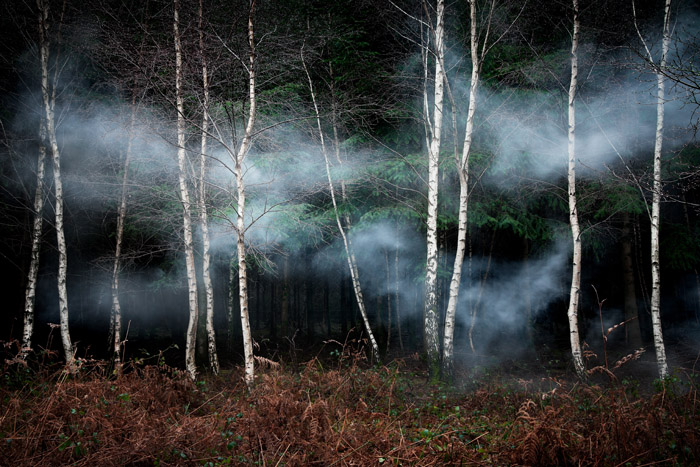
F-Stop: How did you first become involved in photography and what led to you working in this medium as an artist?
Ellie Davies: My Dad was a keen amateur photographer and I was surrounded by cameras and darkroom equipment throughout my childhood but I didn’t get really interested in photography until my teens when I started to get into the darkroom and experiment with processing techniques and Polaroid. I loved the immediacy of Polaroid ‘665’ (which gives an instant print and a large format negative) and had my own little mobile processing kit so that I could fix the negatives as I worked; the fun of peeling back the negative from the print, dipping it into the fix bucket and washing and drying the big negatives before printing them. I was hooked!
I moved to London in my early 20’s and assisted lots of commercial photographers to learn about lighting and technique, soon realizing that in order to make the work I felt passionate about I needed to be independent. I took the MA Photography course at London College of Communication and over those two years I learned how to develop a body of work over a long period, to keep editing, making, and editing again. It was hard but it played a vital role in allowing me to develop my work to this point.
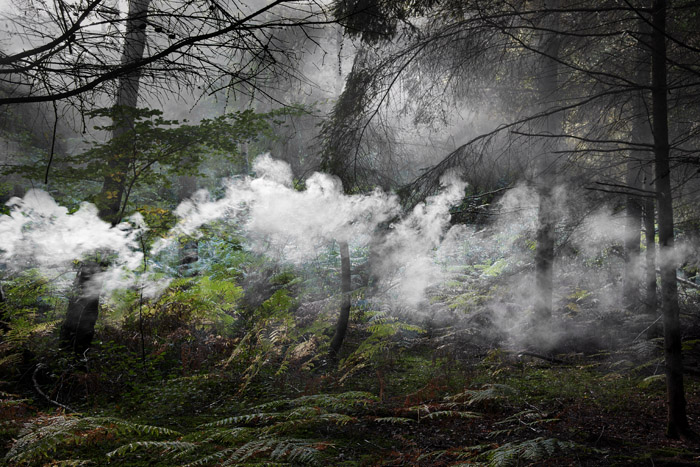
F-Stop: The “Natural World” issue of F-Stop features your project “Between the Trees.” For me, your statement about this work evokes setting the scene for a movie, one that is part calm and meditative and part spooky where something incredible is about to happen. Do you think of this work in a cinematic or staging a scene sort of way?
ED: In all my images the woods are used as a studio or a stage set. They form a background into which I introduce my ideas; something of myself, woven into the landscape in order to suggest or imply meaning to the viewer. My work creates a relationship between myself and the landscape.
This series is very much about the sensation of being in the woods, and for me this is as you say part meditative, and part spooky. I work alone and I often sit for a while in the woods before I start working. In everyday life I am rarely alone. When you enter a wood the sounds become flatter, the air is still, the light is filtered through the branches above, and you feel a sort of self-consciousness as you notice each snapping twig and rustle in the undergrowth with a heightened sense of awareness. However, once I start working I become part of the woodland and all this ‘difference’ falls away. This is the ‘access’ that my work gives me, the connection that I strive for, a sort of co-existence.
In my artist’s statement I use a quote from John Berger which brilliantly describes this elusive relationship, and which inspired this series as a means of communication this:
"A forest is what exists between its trees, between its dense undergrowth and its clearings, between all its life cycles and their different time-scales…A forest is a meeting place between those who enter it and something unnameable and attendant… Something intangible and within touching distance. Neither silent nor audible."*
* John Berger in - ‘Hold Everything Dear: Dispatches on Survival and Resistance’, p.135-140 Verso, 2007.
F-Stop: Tell us about this project, what led to you creating it?
ED: This new series continues to explore my connection to the British landscape. I live in London but grew up in the New Forest and I struggle to find balance in either environment. The natural world is strangely inaccessible to the passing visitor and I yearn for the wild places of my childhood but know that to really feel part of those places you must live, and spend time in them. This work is part of that process, an attempt to gain access, to gain a real connection with the natural landscapes of my early years.
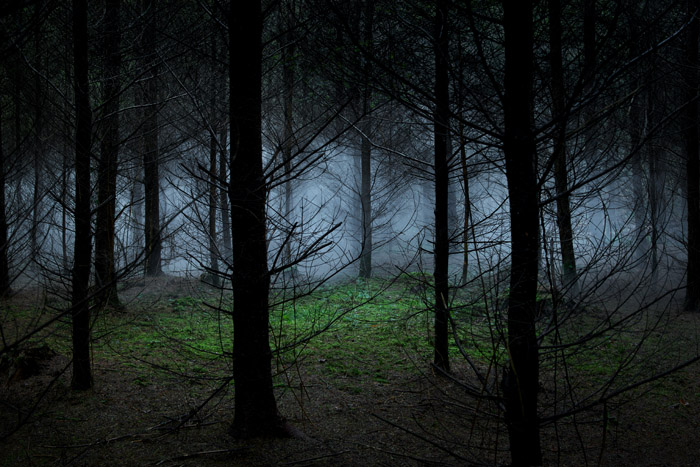
F-Stop: What is your process for making these images or your creative process more generally?
ED: The idea for new work will usually start to form whilst I am walking in the woods. I can’t think of ideas if I’m sitting at a desk, I need to be out in the landscape. I write lots of lists, fleshing them out as little diagrams and sketches with further lists of possible materials and locations. Over time these ideas seem to crystallize until some fall away and others demand to be executed.
The next stage is to identify the location. The place is the catalyst. Before this point the idea is just a collection of materials but the woodland itself creates the image. I walk a great deal to find the right place, framing up with the camera on a tripod. Once I’ve found the right scene I begin the making process. With series’ like The Dwellings and Another Green World the objects themselves were made from materials gathered from the surrounding area over a day or so. In other series such as The Gloaming and Islands I used lighting so this introduces other, more technical issues.
I usually have a vague outline of what I will be creating but it isn’t until I am set up in the woods that I start to make decisions about colour, composition and how to build the components of the image. That’s what I love, working with, and in the landscape.
F-Stop: What do you hope people see or feel or perhaps learn when they look at these photographs?
ED:I want my work to make the viewer experience the sensation of being alone in the woods. There is a tension and quiet, a heightened awareness that comes in the forest, and it is this that I want to transmit in my work and the reason why I work alone when I make my images.
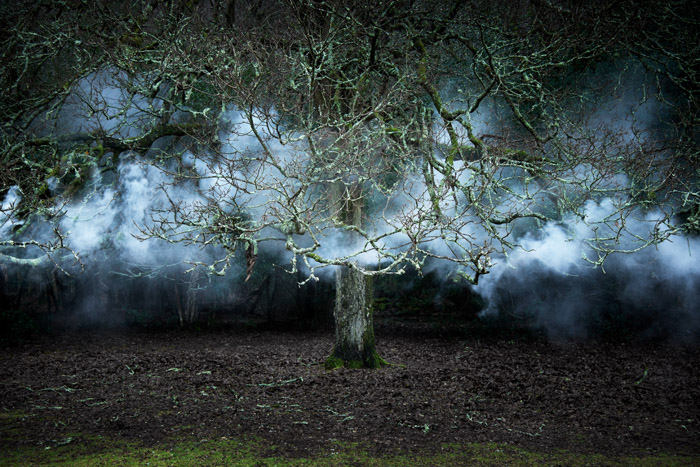
F-Stop: Do you have a favorite image in this series? If so, which one and why is it the image that speaks to you most?
ED: ‘Between the Trees 11’ is my favorite image in the series. In most bodies of work there is one image that has a strength that jumps out because it does exactly what I wanted the series to do, and for me this is that image. I love the simplicity of a single tree. This old Oak was huge and majestic, each branch and twig covered with silvery lichen and I photographed it in the pouring rain so that the background drops away into gloom.
Since making this image I have found a huge clearing surrounded by more enormous Oaks covered with moss and I am planning to make further images of these trees which might go into this series, or form a new series of their own.
F-Stop: What is the intended "end" or "purpose" for the project? (i.e, book, multi media piece, etc.)
ED: Between the Trees is on-going so I will continue to make new work to add to it. I hope to exhibit this series and I am working on a book proposal at the moment.
F-Stop: What are you working on now?
ED: I’m still working on Between the Trees, still immersed in this series emotionally and practically. I generally make one series of work at a time and I don’t move on to the next one until it is finished.
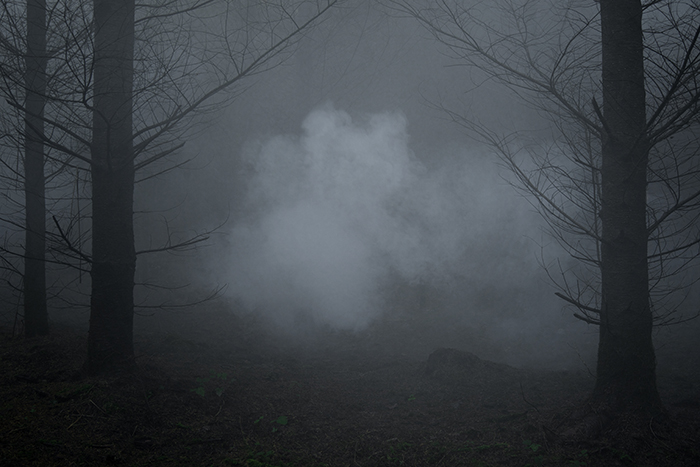
F-Stop: What photographers or other artists inspire you?
MS: Jem Southam’s Pond and Rockfall series’s; I saw him talk a few years ago and his approach made a big impression on me. He works slowly over a long period of time, returning again and again to the same site. This element has grown within my work as I return repeatedly to the New Forest, often to one area of woodland in particular. This small area holds such variety that I am constantly drawn back there to make new work.
I also love Martina Lindqvist’s Ragskar Island, Jo Metson Scott’s ethereal installations, Jitka Hanzlova’s forest interiors and Crystel Lebas’s dark forest-scapes.
I am a rock climber and it takes me to incredible mountain landscapes all over the world, to all kinds of places I would never have otherwise gone. I would love to make some work in these environments and I’m inspired by the mountainscapes of Daniel Gustav Cramer and Jochen Klein.
See "Between the Trees, 2014" on F-Stop HERE.

Socialize with Us: